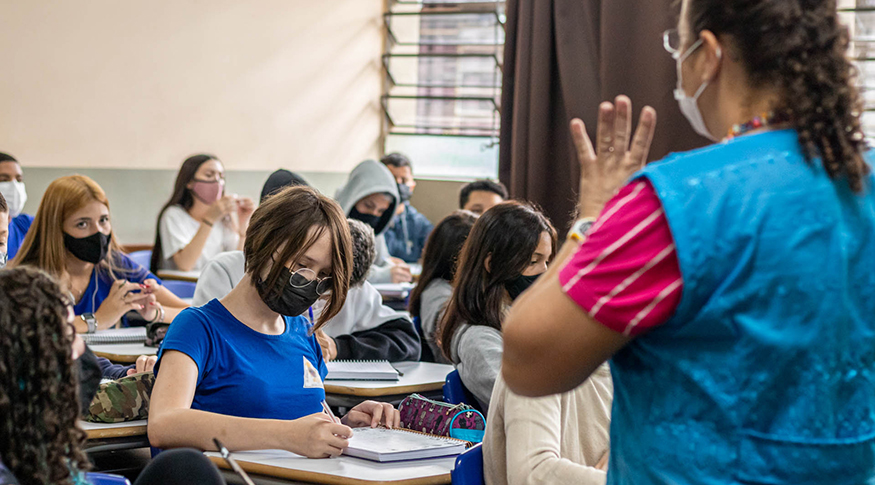IPCA
Inflation hits 1.01%, highest figure in February since 2015
March 11, 2022 09h00 AM | Last Updated: March 13, 2022 12h23 AM

Inflation rose 1.01% in February 2022, having recorded the biggest change for a month of February since 2015 (1.22%). The index was of 0.47 percentage points above the result registered in January (0.54%). In the year, it recorded an increase of 1.56%. The data are from the Extended National Consumer Price Index (IPCA), released today (11) by the IBGE. The index has registered a cumulative rise of 2.70% in the last 12 months.
In February, the main impacts came from Education (5.61%) and food and beverages (1.28%).
“In February, IBGE encompassed the price adjustments usually established in the beginning of the school year. As a result, that was the group accounting for the biggest impact in the month, having contributed with 0.31 percentage points. Another significant grouo in terms of contribution to the monthly index was Food and beverages, which accelerated to 1.28% and accounted for 0.27 percentage points. Altogether, both grouos represented about 57% of the IPCA of February,” says the survey manager, Pedro Kislanov.
In the group Education (5.61%), the main impact (0.28 p.p.) was that of regular courses (6.67%), with a highlight to elementary education (8.06%), pre-school (7.67%) and high school (7.53%). The prices of higher education courses and post graduate courses rose 5.82% and 2.79%, respectively. Miscellaneous courses, in turn, recorded an increase of 3.91%, with the bigget change within the item registered by language courses (7.29%).
Food and beverages has recorded successive increases since the beginning of the current series, in January 2020, with the month of November 2021 as the only exception, when there was a change of -0.04%. In 12 months, this segment has had a cumulative increase of 9.12%.
“In February, Food and beverages was affected by the excess of rainfall and and also droughts that damaged production in several planting areas in Brazil. The main highlights were rise of prices of potato (23.49%) and carrots (55.41%). As for carrots, the changes ranged between 39.26% in São Paulo and 88.15% in Vitória. Also, fruits rose 3.55%,” Mr. Kislanov says.
On the other hand, prices dropped in the case of whole chicken (-2.29%) and chicken pieces (-1.35%), which also recorded decreases in January, from -0.85% and -0.71%, respectively.
In the last 12 months, fuels, with an increase of 33.33%, was the main item regarding the rise of inflation. However, in February, this item of the group Transportation (0.46%), recorded a decrease of 0.92%.
“The price of gasoline fell 0.47%, having accounted for -0.03 percentage points of the February IPCA. On the other hand, increases were recorded by diesel (1.65%). In 12 months, gasoline rose 32.62% and dieses, 40.54%. In the month, ethanol recorded the most significant decrease, with -5.04% of change and -0.05 percentage points of impact. Vehicle gas rose 2.77%,” Mr. Kislanov explains.
In the group Transportation (0.46%), the biggest contribution (0.05 p.p.) came from new cars (1.68%), whose prices rose for the 18th month in a row. Prices of used cars (1.51%) and motorcycles (1.72%) also remain high. Other highlights were car insurance (3.24%), car repair (0.92%) and urban buses (0.45%), with the last one due to adjustments of price fares charged in many areas of coverage of the index.
INPC changed by 0.39% in February
The National Consumer Price Index - INPC rose 1.00% in February, being 0.67 percentage points above the rate of January. That was the biggest change for a month of February since 2015, when the index was 1.16%. The cumulative INPC in the year is 1.68% and, in the last 12 months, at 10.80%, above the rate of 10.60% registered in the 12 immediately previous months. In February 2021, the rate was 0.82%.
“The group Education is less relevant to the INPC than to the IPCA. As a result, rises in this group had a lower impact on the final result (0.22 p.p. on the INPC versus 0.31 p.p. on the IPCA). As for INPC, food products wen from 1.08% in January to 1.25% in February. Non-food products also recorded an increase in February (0.92%) from January (0.54%)”, says Kislanov.
All the areas surveyed recorded price rises
Regarding regional indexes, all the areas surveyed recorded price rises in February. The lowest result was that of the metropolitan area of Porto Alegre (0.40%), due to the fall of gasoline prices (-4.33%). The biggest change, in turn,was that of São Luís (1.35%), mainly due to the rise in regular courses (7.67%) and in personal hygiene items (2.27%).
About the IPCA
The National System of Consumer Price Indexes (SNIPC) produces the IPCA, which aims at measuring the inflation of a whole set of products and services traded in the retail, related to the consumption of households.
The IPCA encompasses households with earnings between 1 and 40 minimum wages, whereas the INPC, households with earnings between 1 and 5 minimum wages, living in the metropolitan areas of Belém, Fortaleza, Recife, Salvador, Belo Horizonte, Vitória, Rio de Janeiro, São Paulo, Curitiba, Porto Alegre, as well as in the Federal District and in the municipalities of Goiânia, Campo Grande, Rio Branco, São Luís and Aracaju. See complete data at Sidra.


















